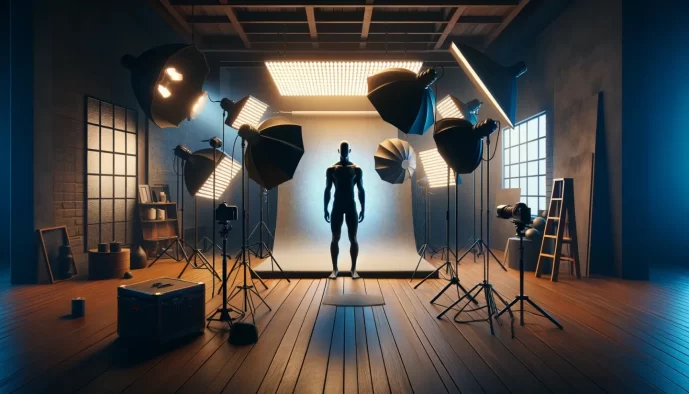Artificial Light Sources
Shed light on photography skills with artificial lighting basics and expert tips.

Understanding Artificial Light
Types of Artificial Light Sources
Artificial light sources include incandescent bulbs, fluorescent lights, LEDs, and HMI (Hydrargyrum Medium-Arc Iodide) lights. Each source has unique properties that impact the quality and mood of a photograph.
The Color Temperature of Light
Color temperature is measured in Kelvins and influences the warmth or coolness of your photo. The lower the Kelvin number, the warmer and more yellow the light, while higher numbers produce cooler, bluer light.
Equipment for Artificial Lighting in Photography
Continuous Lights vs. Strobe Lights
Continuous lights are always on, allowing you to see the effects in real time. Strobe lights, or flash units, provide a powerful burst of light for a fraction of a second, usually when the photograph is taken.
Modifiers and their Effects
Modifiers like softboxes, umbrellas, and beauty dishes control the direction and softness of the light. Softboxes create diffused, even lighting, umbrellas can spread light over a larger area, and beauty dishes produce a focused, soft light with more contrast.
Setting Up Your Artificial Lighting
Basic Lighting Setups
The simple three-point lighting setup consists of a key light, fill light, and back light to create dimension and depth. Experimenting with the placement can dramatically change the look of your images.
Positioning Lights for Desired Effects
Positioning your key light at different angles can produce varying effects, like the dramatic chiaroscuro or a gentle, flattering look. The fill light’s job is to soften shadows, and its intensity dictates the contrast in your subject.
Camera Settings for Artificial Light Photography
Balancing ISO, Aperture, and Shutter Speed
ISO affects the sensor’s sensitivity to light, aperture controls the amount of light that enters the lens, and shutter speed determines the duration of the exposure. Mastering these settings is pivotal for nailing the exposure without compromising image quality.
White Balance Adjustments
Adjusting white balance is crucial for accurate color representation. Presets can be a starting point, but custom white balance provides precision, particularly in mixed-lighting situations.
Creative Techniques with Artificial Light
Mixing Light Sources
Use a combination of different temperatures and sources to add complexity to your lighting setup. This can create visual interest and depth that isn’t possible with a single light source.
Using Gels for Color Effects
Colored gels alter the color of light, allowing for creative expression and mood setting in your images. They can also be used to match or contrast with the ambient light.
Post-Processing Tips for Artificially Lit Photos
Adjusting Exposure and Contrast
Post-processing is where you can fine-tune exposure and contrast. Be cautious not to lose detail in your highlights and shadows as you make adjustments.
Color Grading for Mood
Color grading allows you to set the overall tone of your image, contributing significantly to the storytelling aspect of your photography.
Common Mistakes and How to Avoid Them
Overexposing the Subject
Overexposure washes out details. To avoid this, check your camera’s histogram and ensure you’re not clipping highlights.
Ignoring Shadows and Highlights
Shadows and highlights add depth and dimension. Pay attention to them both during shooting and in post-processing to maintain a balanced image.
In mastering artificial light, the key takeaway is to understand the tools and principles at your disposal to craft the desired mood and effect. It’s an art form where precision meets creativity, and with enough practice, the only limit is your imagination.